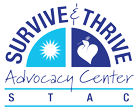
jamie r 2021
By Jamie Rosseland
January is always a significant month in my life. It’s a season of new beginnings and resolutions. A time of reflection and goal setting. It’s also National Human Trafficking Prevention Month. Most years I see those two things as separate. But this year, I am curious about what it would mean to bring the new year spirit into this important social justice issue.
So often, prevention in the anti-trafficking field is focused on educating girls on the dangers of human trafficking. It places the onus of the multi-billion-dollar illicit sex trade industry squarely on the shoulders of teenage girls. It disregards the social context in which people are trafficked. This approach to prevention leaves out a spectrum of other people who are victimized by both sex and labor trafficking.
If January is a season of new beginnings and resolutions, a time of reflection and goal setting, then it should be a time when we consider what new beginnings we need when it comes to prevention, what new resolutions should be set in the anti-trafficking field, and what areas do we need to reflect on to do better?
As a consultant in the field of anti-trafficking work, and lived-experience expert, I often see evidence that the new beginning we need is a more wholistic approach to prevention. People are trafficked in communities, and it takes a community approach to prevention. The Survive and Thrive Advocacy Center has been working hard on multiple fronts to bring communities together to prevent trafficking in dynamic and multi-faceted ways. Last year I had the privilege to work on the STACPRO Human Trafficking Business Training and The Toolkit for Caregivers and Youth. Both projects look at prevention as a community effort.
The Survive and Thrive Advocacy Center takes the time to listen to the stakeholders on each project, including survivors, to inform their approach. They are leading the way to making cutting-edge resolutions. It’s an organization I’m excited to be partnering with.
Developing a toolkit for youth and caregivers started with focus groups and surveys in communities where trafficking is prevalent. We enlisted the voices of those most likely to be impacted to share their perspectives on trafficking. We took their feedback and let it inform the toolkit. It was important not to lecture youth and their caregivers on the dangers of trafficking and instead bring them in as active participants in preventing trafficking in their communities.
In the focus groups and surveys, youth and their caregivers made it clear they didn’t want to be seen as potential hapless victims, instead they wanted pragmatic tools for addressing this issue. They need to know how to talk about this topic with one another. They want to feel empowered to do something about it. The toolkit evolved into a way to strengthen and make communities safer through relationships and active participation.
As we reflect on anti-trafficking work, an important insight to take away is that stronger and safer communities are what actually prevent trafficking. The goals we should be setting should be centered on creating stronger social safety nets for one another.
Jamie Rosseland is an anti-human trafficking expert and survivor advocate. You can contact her at jamiefrosse@gmail.com.






